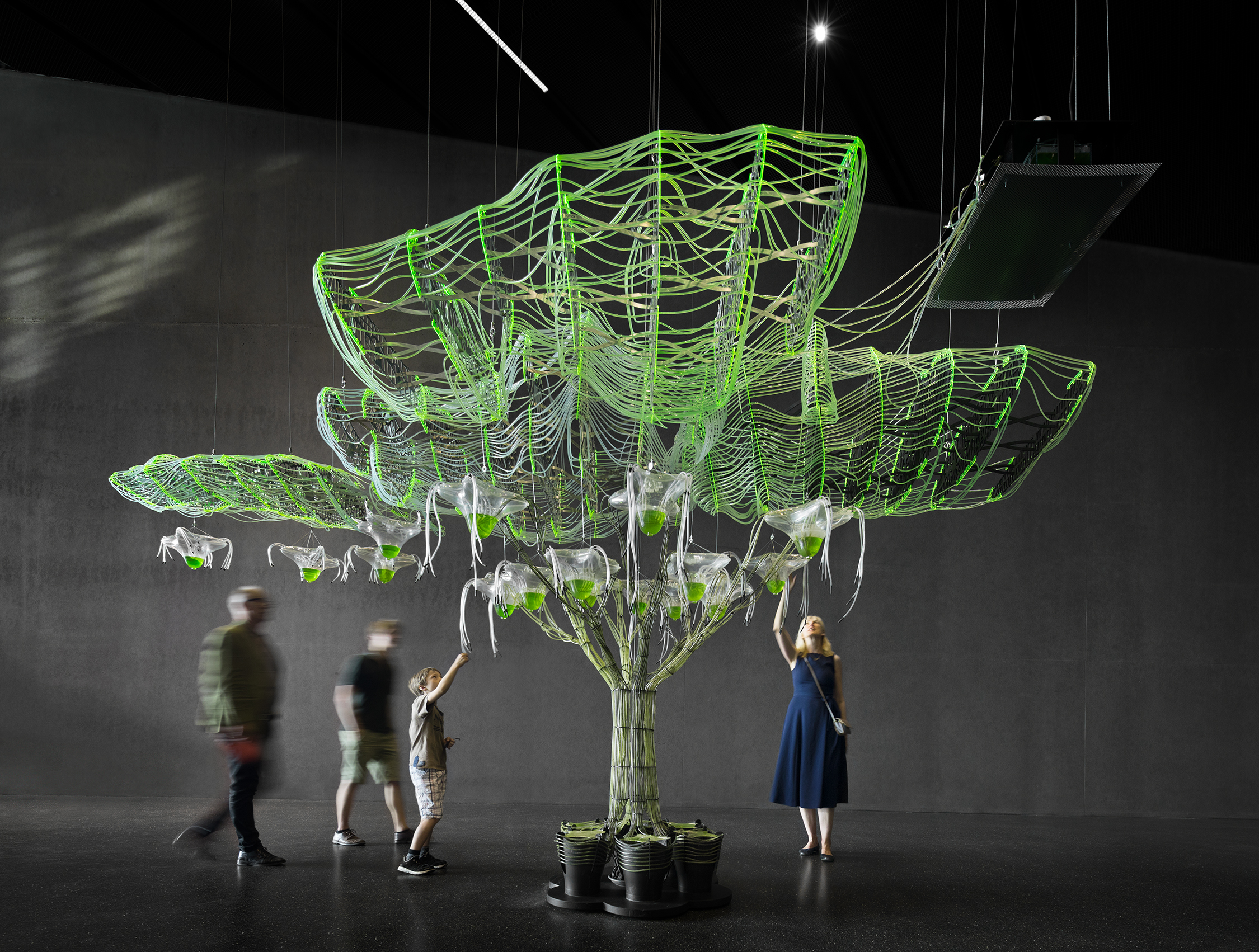SuperTree is an architectural apparatus that repurposes the archetype of the tree to optimize its infrastructural operations as part of the present Urbansphere.
SuperTree is now part of the permanent collection of ZKM Karlsruhe. If you are interested in a loan for a new exhibition please get in touch with us.

Today we inhabit the Urbansphere, an augmented version of the original Biosphere. The global synthesis of matter, energy and nutrients for human consumption forms an endless infrastructural network. Its nodes and terminals are increasingly large in scale, generic in form and automated in their functioning, designed as they are to achieve maximum productivity and increasing efficiency. The Urbansphere in this sense has infrastructuralized Nature, and any landscape or living creature is now part of it.

Trees, the most potent symbols of our old ideal of Nature, have now also evolved into carbon sinking machines, shading devices, flooding barriers, building material, marketing tools and so on, serving the Urbansphere's increasingly demanding metabolism while also providing large parts of its soft interface towards other living creatures, including us. It is a challenging role, one that requires quick responsiveness and radical adaptation capabilities, both incompatible with the slow timing of biological evolution.

That is why we have fast-forward their biological evolution and synthesized a SuperTree. It is an architectural apparatus that repurposes the biological tree to optimize its infrastructural operations as part of the present and future Urbansphere. SuperTree transforms the archetype of the tree into a high-resolution, high-productivity photo-bioreactor, able to connect human metabolism to the proliferation of life within micro-algal ecologies.
Flows of Energy [light radiation], Matter [proteins, CO2, cyanobacteria] and Information [morphology, DNA] are intercepted, processed and returned by SuperTree with an efficiency that is one order of magnitude greater than a conventional Tree.

The core structure of SuperTree is algorithmically designed; light radiation iso-surfaces are computed to determine the boundaries of the canopy, Voronoi tessellation is deployed to develop its porous internal structure and branching logics define its trunk and base rooting system. Laser cut aluminium makes it extremely lightweight, reflective and porous to incoming light radiation. Future versions will include fibrous systems in Silk, woven directly on site by genetically engineered and digitally trained social tarantula, achieving higher resolution, and incredible mechanical resistance at a fraction of the present mass.

The canopy and main trunk are entirely photosynthetic, powered by colonies of cyanobacteria which produce 10 times more oxygen than the leaves of a tree of similar size. In the next two years we will utilise a CRISPR-based* approach to selective breeding of the microalga Nannochloropsis Gaditana, to identify robust variants, capable of dealing with the most challenging urban environment

The microorganisms flow within a 6 km long pipe, exposing them to maximum amount of radiation. Co2 / O2 exchange occurs at the base and at the vacuum formed fruiting bodies. These host tendrils for human / plant interaction. Humans exhale CO2, thus feeding the bacteria the carbon they need to build biomass. O2 is released in exchange for humans to breathe. As biomass builds up within the fruiting bodies their protein content increases exponentially as 60% in mass of wet algae is vegetable protein oils. Such protein value can be directly sucked out of the fruiting bodies via silicon cannulae.
SuperTree can feed four humans enough proteins to cover their recommended daily intake or generate biomass for bio-digestion, emitting biogas as a result.




